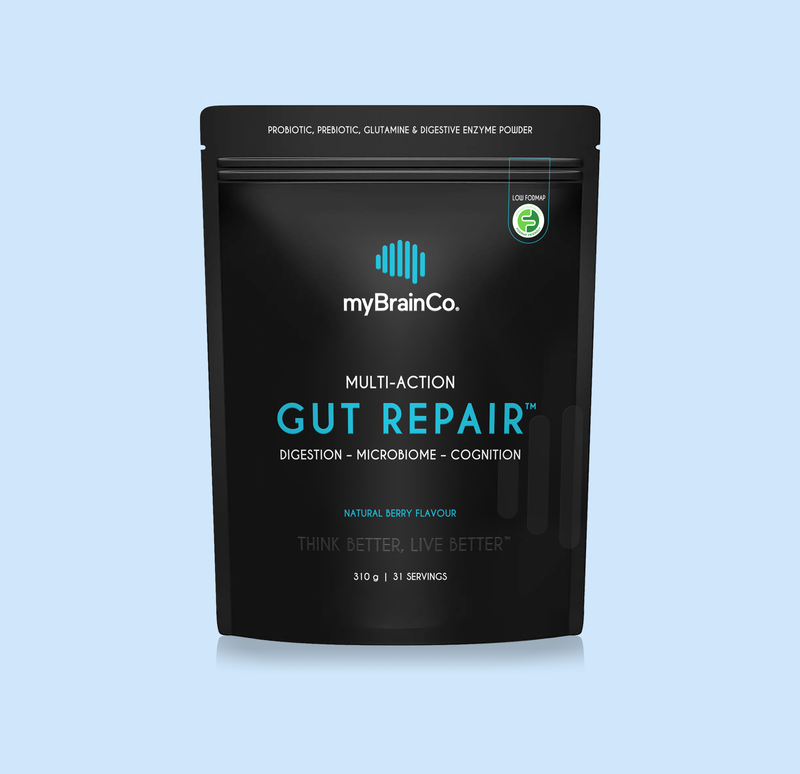Eat more fibre. This message of dietary optimisation has been promoted to us through recommendations by doctors, dietitians, government agencies and the food industry.
But what do we know about the benefits of fibre for our gut health and overall wellbeing?
How can we find our personal groove with this nutrient and create a fibre-balanced diet?
It is clear that over decades, within Westernised societies, the diet has changed radically from that of our ancestors with significant implications for our co-evolved microbiota due to lack of nutrients, including fibre.
Yet, research demonstrates that excess fibre intake may also be unfavourable, particularly for those with digestive problems.
After all, like anything in life, too much of a good thing might not necessarily be the answer.
What do we know about fibre?
Dietary fibre is a non-digestible form of carbohydrate that originates from plant-based foods.
It journeys through the small intestine to the large colon practically intact to impart a range of health benefits, from optimising metabolism to building vital microbiota communities.
Ideally, dietary fibre should be sourced from whole food plant sources, such as sweet potatoes, green leafy vegetables, carrots and other root vegetables, fruits (with an edible peel), berries, seeds and nuts.
However, supplementation with good quality soluble fibre/prebiotic will definitely be of value to individuals who are lacking fibre in their diet.
The Australian Dietary Guidelines recommend consuming 14 to 30 grams of fibre per day, depending on factors such as gender and age. Most Australians fall short of these recommendations.
Let’s explore the different types of fibre and their impact on your health.
The Many Types Of Fibre
The fibre ‘family’ comprises a wide array of compounds that have been categorised into various groups. However, it is important to note that most foods will contain a combination of these different fibre types.
Soluble Fibre Versus Insoluble Fibre:
Soluble fibre, as the name suggests, dissolves in water and forms a gel-like material in the gastrointestinal tract. Most soluble fibres are fermented by gut microbiota to produce metabolically active short-chain fatty acids (SCFAs), such as butyrate.
Backed up by extensive evidence, SCFAs are crucial players for guarding against inflammation, rebuilding a resilient intestinal barrier, powering up gut immunity and influencing brain health via microbiota-gut-brain interactions.
Another key feature of soluble fibre is that it slows the movement of food through the digestive tract; this effect facilitates growth of beneficial bacteria while limiting the growth of pro-inflammatory bacterial species.
Soluble fibre also binds toxins, lowers cholesterol and improves blood sugar control by slowing the release of carbohydrates from food. For those who are trying to get hunger pangs under control and achieve a healthy weight, soluble fibre is good news.
The major types of soluble fibre include:
- Pectin
- Gum
- Mucilate
- Fructan
- Hemicellulose
Foods that are rich in soluble fibre are:
- Sweet and white potatoes
- Oats
- Asparagus
- Berries
- Apples
On the other hand, insoluble fibre does not dissolve in water. It adds bulk to stool and tends to speed up the movement of food through the gastrointestinal tract which can support bowel regularity and prevent haemorrhoids. Insoluble fibre can also keep you satisfied between meals and consequently help with weight management. The major types of insoluble fibre include hemicellulose, lignin and resistant starch. Examples of insoluble fibre are whole grains, vegetables, legumes, nuts, seeds and the skin of fruit and vegetables.
It might not be a very well-known fact, but insoluble fibre, when consumed in large quantities, can be irritating to the gut, especially if the digestive tract is inflamed. It is a little bit like rubbing a wire brush against an open wound (4,5). So if irritable bowel syndrome (IBS) or inflammatory bowel disease (IBD) is one of your concerns, ease off on the insoluble fibre and explore your personal fibre style.
Resistant Starch
Resistant starch is insoluble but highly fermentable which makes it quite unique on the fibre front. This type of starch bypasses the small intestine and feeds the bacteria in the large colon. As SCFAs are also produced, health benefits will resemble those offered by soluble fibre. Food sources of resistant starch include: green banana flour, legumes, purple sweet potatoes and cooked and cooled white potatoes.
Probiotics
The main function of prebiotics is to support the growth of beneficial gut bacteria. Dietary fibres and starches can act as prebiotics, and interestingly so can other plant-derived molecules such as polyphenols. By improving the composition of the gut microbiome, prebiotics have downstream beneficial effects on many aspects of health, including bone health, metabolism and brain function. Inulin, green tea, cacao and blueberries and raw honey are all great sources of prebiotics.
It is clear that fibre is a crucial element of a healthy and balanced diet, to optimise gut and brain health as well as overall wellbeing.
However, like with everything, choosing an approach of moderation to fibre is also important. Despite the amazing benefits of this macronutrient, when consumed in large quantities, it can inhibit the absorption of certain nutrients, such as iron, zinc and magnesium. Anti-nutrients, such as phytic acid and oxalate, can also reduce the bio-accessibility of nutrients in foods. Large excesses of certain soluble fibres like pectin may inhibit pancreatic enzyme activity and protein digestion in the gut, leading to an anti-nutritive effect.
The process of finding your personal groove with fibre may take time as the outcome will depend on your current gut health, digestive capacity, metabolic health and inflammation levels. If unsure, seek support from a nutritionist or a naturopath to help determine your unique fibre needs.
.
.
.
.
.
REFERENCES
- https://www.nrv.gov.au/nutrients/dietary-fibre
- https://www.ncbi.nlm.nih.gov/pmc/articles/PMC7589116/
- https://www.frontiersin.org/articles/10.3389/fendo.2020.00025/full
- https://www.spandidos-publications.com/ijmm/40/3/607
- https://www.ncbi.nlm.nih.gov/pmc/articles/PMC4415970/
- https://www.sciencedirect.com/science/article/pii/S0308814618300281
- https://www.ncbi.nlm.nih.gov/pmc/articles/PMC6770155/
- https://www.tandfonline.com/doi/abs/10.1080/10408399109527539
- https://www.sciencedirect.com/science/article/abs/pii/S0016508582802564a)



